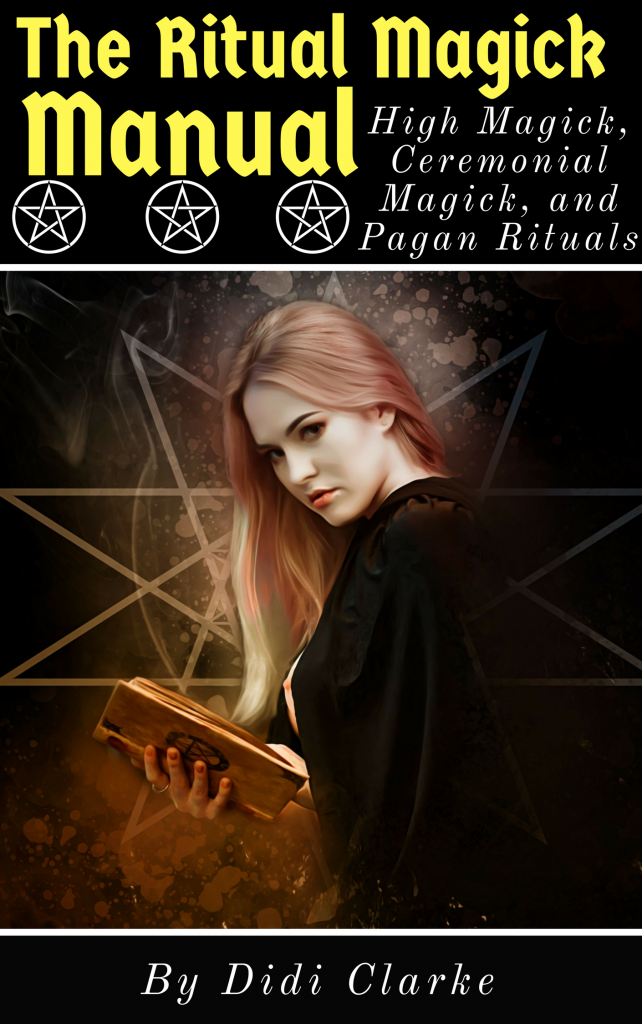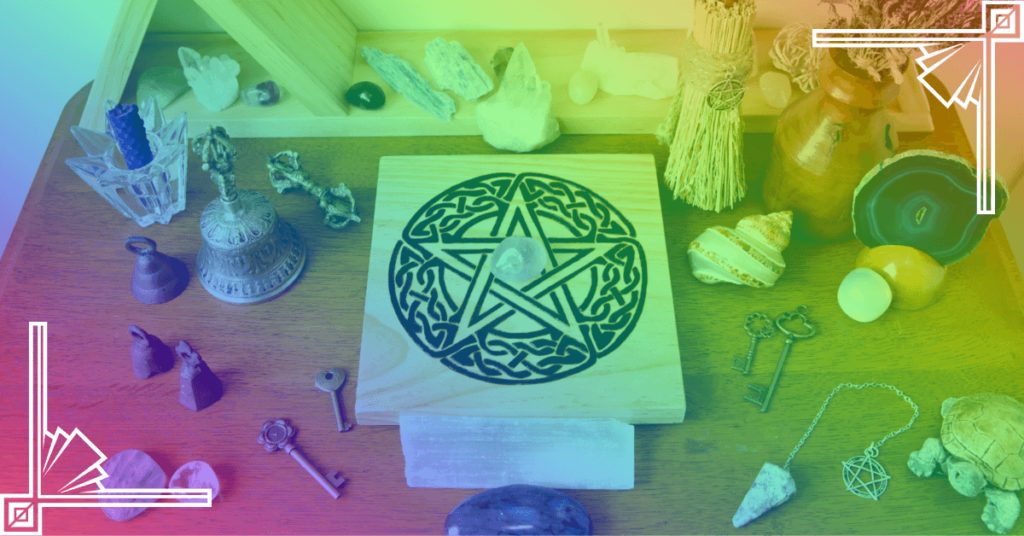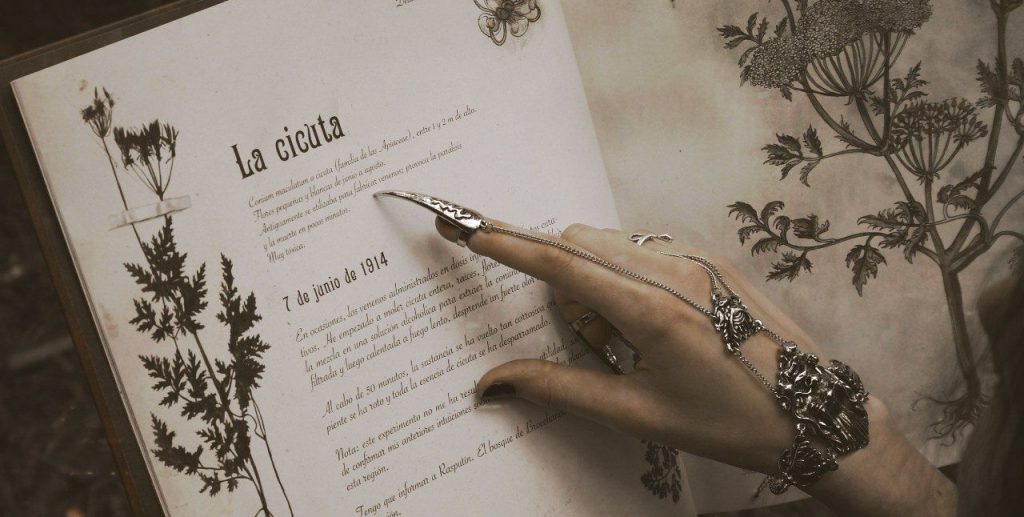As an Amazon Associate I earn from qualifying purchases
The Power of Symbols
Symbols are one of the most prevalent and powerful things that human beings have ever created. They take big ideas and abstract concepts and present them in a way that we can better understand and internalize.
Take this one, for example:

Most of us immediately recognize this symbol as a heart.
However, this isn’t just a simple representation of a bodily organ—a symbol has depth and layers beyond its most obvious meaning. In this particular example, the symbol probably conjures up ideas of love and romance.
For many of us, this symbol also has specific connotations of young love and youthful crushes. Who among us in middle school didn’t scribble a heart in their notebook with the name of whichever classmate had caught our eye that week?
All of this meaning and association from one simple, unbroken line! And that’s where the true importance of symbols resides—in their ability to condense complex meaning into something simple.
They say a lot without saying much at all.
Symbols in Wicca
Like most religions, Wicca has its fair share of important symbols. We frequently incorporate them into spells and rituals as a way to link the ethereal, mysterious power of magick with the physical world.
Symbols are the place where spiritual energy and a witch’s will meet and become one.
In this article, we’ll be taking a look at ten of the most important Wiccan symbols within the religion. This is by no means an exhaustive list, but these are the ones that you will encounter the most on your journey into the world of magick.
First, we’ll explore the symbols themselves, what they represent, and how they were created. Then, we’ll conclude with some suggestions on how to incorporate the symbols you’ve learned into your own magickal practice.
Are you ready to tap into the power of symbolism?
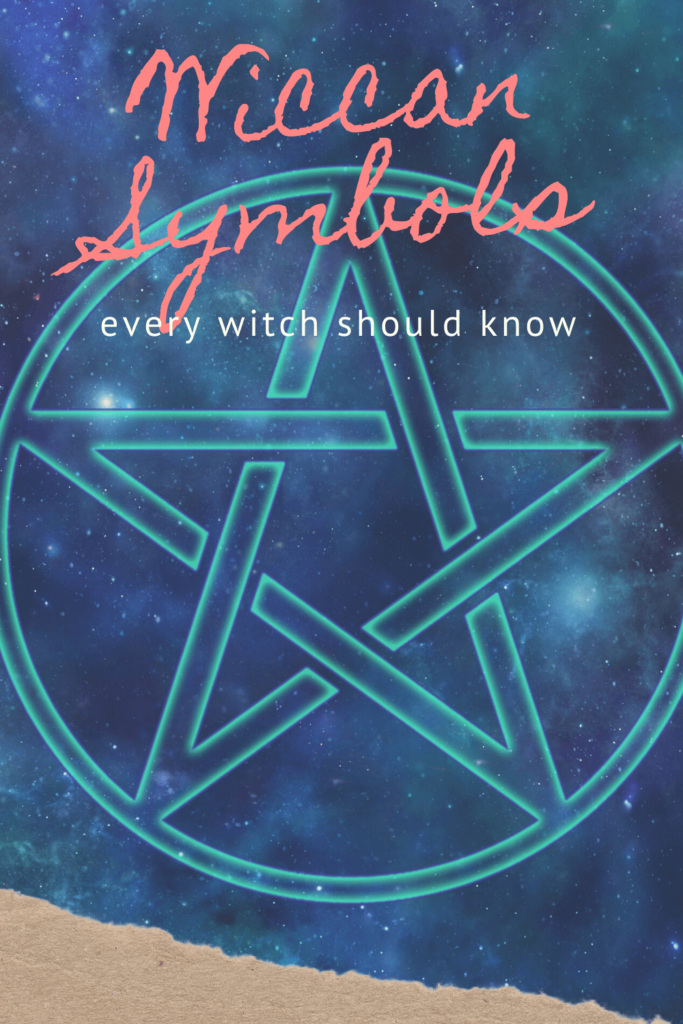
Table of Contents
The Pentagram
The Triple Moon
The Horned God
The Elemental Symbols
The Celtic Knot
The Witch’s Knot
The Wheel of the Year
How to Incorporate Symbols Into Your Magick
Explore More Wiccan Symbolism
The Pentagram
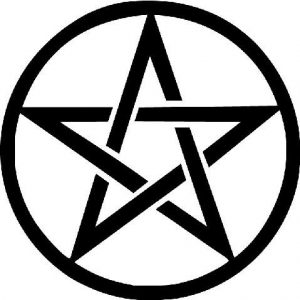
The pentagram is a symbol that almost everyone, Wiccans and non-Wiccans alike, associate with witchcraft. This five-pointed star enclosed in a circle lays out some of the foundational beliefs within Wicca.
The four bottom points of the star represent the four traditional elements—air, water, earth, and fire.
We’ll take a closer look at them later in the article, but for now, all you need to know is that these elements, when taken as a whole, signify the physical, material world.
From one point of view, magick deals with the supernatural. Spirits and spells and incantations could all be considered supernatural—and there are plenty of those in the magickal world!
However, in another sense, magick is all about the natural world that these four points represent. Ultimately, the goal of magick is to use the spiritual to influence the physical, and this idea is clearly represented in the pentagram.
But there’s more to the story—we’ve still got one point to go!
The topmost point on a pentagram represents the divine. For some Wiccans, the divine is a god or a group of gods and goddesses, but for others, it’s more abstract. Regardless, a majority of witches have some conception of divine or spiritual energy that influences and presides over the physical world.
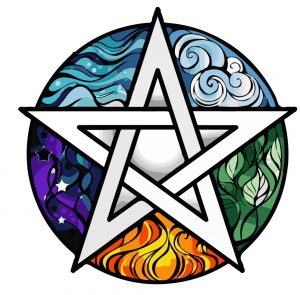
Finally, we come to the circle.
Across many different religions and cultures, this shape represents unity or wholeness, and Wicca is no exception to this trend. The circle of a pentagram symbolizes the perfect unity of the physical and spirit worlds.
The universe is in harmony when the two become one, and the aim of magick is to achieve this balance.
Pentagram vs. Pentacle
Within the world of Wicca, there is a word that sounds nearly identical to pentagram—pentacle. These two similar words can be a major headache to keep straight!
Misconception #1
One of the most common misconceptions about the two goes a little like this: it’s a pentacle if the star is pointing up, and it’s a pentagram is the star is pointing down.
Additionally, you might also hear that the downward-facing pentagram has Satanic, sinister connotations.
Despite the popularity of this belief, it’s simply not true.
The position of the star within the circle varies depending on the purpose you’re trying to achieve. While Satanists may indeed use imagery of the downward-facing star, Wiccans are free to do so as well without fear that they are accidentally worshipping Satan.
For example, you might want to use this positioning when performing green magick (spells inspired by nature). This tradition is all about harnessing the power of the natural world, so it makes sense to give it precedence in your symbolism.
Additionally, you might find downward-pointing stars in banishment or binding spells, as some witches believe in their power to drive away negativity and bad energy.
Misconception #2
You might also hear it said that a pentagram is simply a five-pointed star, while a pentacle is the same star within a circle.
This explanation sounds reasonable enough, but once again it’s simply not the case. In this instance, confusion stems from the fact that pentacle and circle both end in “-cle.” However, the two terms are unrelated linguistically.
The Real Difference Between a Pentagram and a Pentacle
First, the easy part: a pentagram is a five-pointed star contained within a circle, no matter which direction it may be oriented. Facing up, facing down, facing sideways—they’re all pentagrams.
But here’s where it gets trickier: a pentagram is itself one specific type of pentacle among many different varieties.
By its traditional definition, a pentacle is any sort of flat disc or cloth with a symbol inscribed on it that’s intended for magickal use. The specific symbol used will vary depending on a witch’s purpose, but they all correspond to some spiritual power—quite frequently a deity or other spirit.
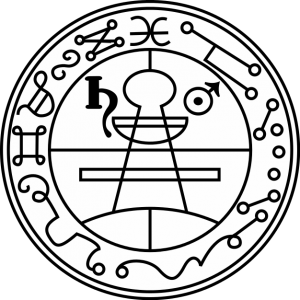
(A very old pentacle known as the “Seal of Solomon”)
In the case of the pentagram, it invokes the power and unity of the divine and the physical. But other pentacles may correspond to a specific God or some other source of power.
The Triple Moon
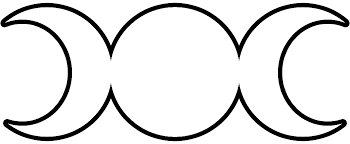
The moon is always in flux.
As the month progresses, it grows from just a small, faint sliver to the bright, radiant full moon. From there, it begins its journey back to nothingness as it grows smaller and smaller.
These different phases are encapsulated in the triple moon symbol.
On the left side of this Wiccan symbol, you have the waxing moon. In the center, the full moon. And on the right, the dying, waning moon. When taken as a whole, these three phases represent the never-ending cycle of birth, life, death, and rebirth.
The moon acts out this sacred drama, month after month, in the darkness of the night sky.
However, the symbol of the triple moon extends deeper than this—it’s also a sign of the Triple Goddess, the most important representation of feminine divinity within Wicca.
Like the moon, the Triple Goddess moves through three principal stages of her life, and these are all contained within the sign. They are:
- The Maiden (waxing moon)
- The Mother (full moon)
- The Crone (waning moon)
The Maiden
The Maiden is the Triple Goddess in her youth. She corresponds with the waxing, growing moon in the symbol. She represents new beginnings, love, and purity.
The Mother
The Mother shows the Goddess as the nurturing, maternal figure that she is. She corresponds with the full moon, and its warm glow is a reflection of her divine love. The Mother is a figure of guidance and protection.
The Crone
The final phase of the moon, the waxing moon, represents the Crone. This is the Triple Goddess at the height of magickal abilities—as old age is a time of intense spiritual power within Wicca. The Crone is a symbol of spiritual wisdom, divination, and banishing negativity.
[If you’d like to know more about the Triple Goddess and the Horned God (more on him below), be sure to check out our article on Wiccan Deities!]
The Horned God
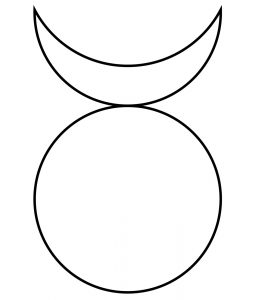
The Horned God is the primary male deity of Wicca, and his symbol has several layers to unpack.
At first glance, we see a simple line drawing of what looks like a face with horns at the top. However, if you’ll think back to the symbol of the triple moon, you’ll notice that this one looks similar. It could also be interpreted as a slim, crescent moon resting on top of a full moon–or a sliver of the moon resting on top of the sun (which we associate with the Horned God).
The Lord and Lady of Wicca
This similarity to the triple moon is no coincidence. Within Wicca, the Triple Goddess and the Horned God are two sides of the same coin—two equal, complementary manifestations of the divine.
Their symbols are visually similar to emphasize the unity of these two deities.
When invoking the Triple Goddess and the Horned God as a pair, you may hear them referred to the Lord and Lady of Wicca. This is simply another way we symbolically link the power of the God with the power of the Goddess.
Elemental Symbols
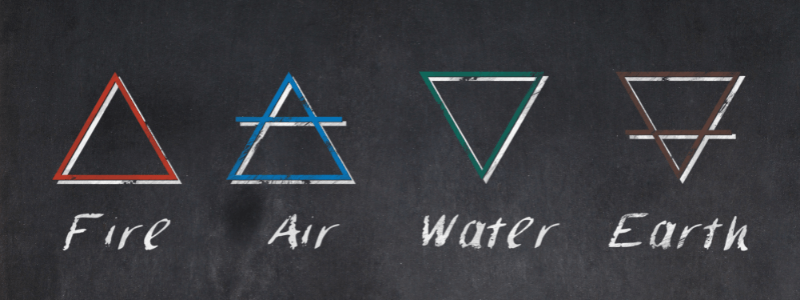
Within witchcraft, there are four, traditional elements:
- Earth
- Fire
- Water
- Air
Although we now know that our universe is made up of much more than these four things, they continue to be used as representations for the natural world.
And when it comes to magick, the natural world is extremely important.
When we work spells or rituals, we draw on some source of spiritual energy to make our will a reality. In some cases, we might invoke a god or goddess for this purpose, but many times, we simply turn to the power of nature itself.
Taken individually, each element has its own unique set of strengths and weaknesses. But when combined within the sacred circle, they become a unified source of power.
Earth
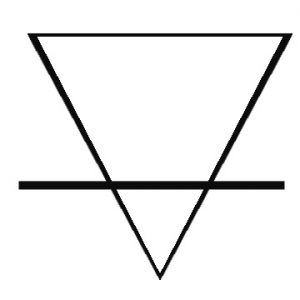
Earth is a Wiccan symbol of constancy and stability.
Its power lies in its unchanging nature. This element grounds our magickal workings in the here and now—it keeps us present and aware. The earth, being very old, also represents the wisdom of experience. All in all, it’s the most practical, pragmatic of all the elements.
Fire
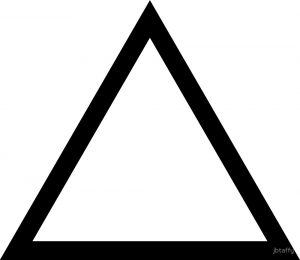
Fire is a sign of passion and intensity.
When we talk about witchcraft, we use the term “will” a lot. If we say we want to make our will manifest, that basically means we want to turn our desire into reality. Fire is the element that drives this desire.
When you throw your heart and soul and passion into working a spell, you’re tapping into the creative, life-affirming power of fire.
Water

Water is a symbol of quiet strength and perseverance.
Unlike fire, which consumes wildly and quickly, this element does not represent spectacular, flashy displays of power. Instead, water represents a power that builds over time.
Think about the Grand Canyon—it took millions of years to create, but it was all done with the power of a simple river.
Air
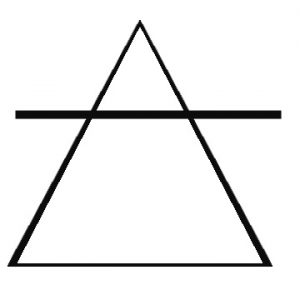
The element of air connects us to the realm of the spirit world. The lightness represented by this element lifts our consciousness into a place where divine, mystical wisdom can be transmitted.
This makes sense, considering how it differs from the other elements—it’s the only one that can’t be seen. However, just because it’s invisible doesn’t mean it lacks in power. The unseen force of the wind reminds us of all the spiritual workings that we cannot see or fathom that nonetheless influence our lives.
The Celtic Knot
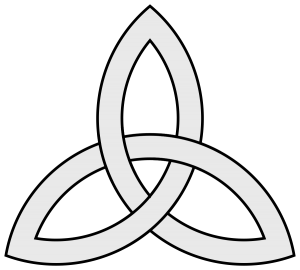
The Celtic knot (also known as the triquetra) is a symbol of threes. The single line it is made from intersects itself exactly three times, creating three leaf-like sections in the design.
(For any math or Latin fans out there, this leafy shape is known as a vesica piscis.)
Some witches use the Celtic knot as another symbol to represent the Triple Goddess, and there’s nothing wrong with this. She is a Goddess closely associated with the number three, after all.
But I think there’s more to the symbol than just this.
Like a circle, the Celtic knot is made out of one unbroken line that has no start or end point. In my mind, this points to the idea of infinity. However, within this infinite line, three finite, distinct sections are created. Something tangible, something countable emerges from infinity.
And this concept ties into the purpose of magick.
As I mentioned earlier, magick is all about harnessing and manipulating spiritual power. Although there may be different “power sources” available to us, they can all be traced back to the infinite, unknowable, and divine energy of the universe.
When you perform a spell, you’re literally pulling energy from the infinite to create a real-world, finite, and knowable manifestation of that power.
Just like the Celtic knot nicely symbolizes.
The Witch’s Knot
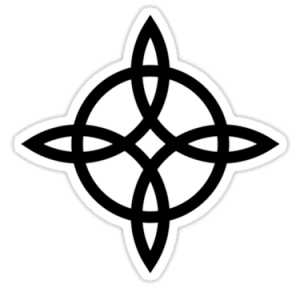
The witch’s knot is interesting in that it’s a symbol…but it’s (k)not!
This shape has been around for centuries, and during that time it’s been commonly used as a means of banishing or warding off evil. However, unlike some symbols that are only represented pictorially, witches will actually use twine or rope to create this very knot.
This is one symbol you can hold in your hands.
If you’re not a skilled knot expert, never fear! The witch’s knot can be used as a simple design too.
Within this Wiccan symbol, we see a circle. In addition to representing infinity, circles are also a common sign of protection within witchcraft. When we cast a sacred circle to perform magick, we create a barrier that spirits of ill will cannot cross.
We also see a shape similar to the Celtic cross in this design. In this case, the shape has four points instead of three. The interpretation of this varies from witch to witch, but it’s often used to represent something that can be grouped in fours—like the traditional elements or the cardinal directions.
Wheel of the Year
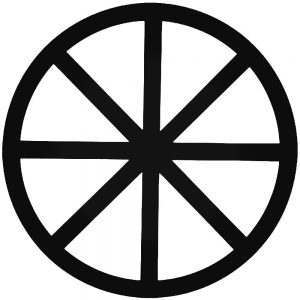
The wheel of the year helps witches navigate through the ever-changing seasons. Just like one year follows the next, one rotation around the wheel of the year is always followed by another.
If you count carefully, you’ll see that this circle is divided into eight sections. Each of these sections represents a different holiday on the Wiccan calendar.
They are as follows:
- Yule (or the Winter Solstice)
- Imbolg
- Ostara (or the Spring Equinox)
- Beltane
- Litha (or the Summer Soltice)
- Lammas (or Lughnasadh)
- Mabon (or the Fall Equinox)
- Samhain
Dividing the year into different sections, each with its own important day, is a way to help witches make sense of the passage of time.
It creates a rhythm that allows us to sync ourselves with the natural process of birth, life, death, and rebirth.
How to Incorporate Wiccan Symbols Into Your Magick
So we’ve covered a lot of ground symbol-wise, but what exactly are you supposed to do with them?
Thankfully, in the world of Wicca, you have plenty of options for displaying them and experiencing their power. The following are just a few suggestions of how to try them out.
Altar Design
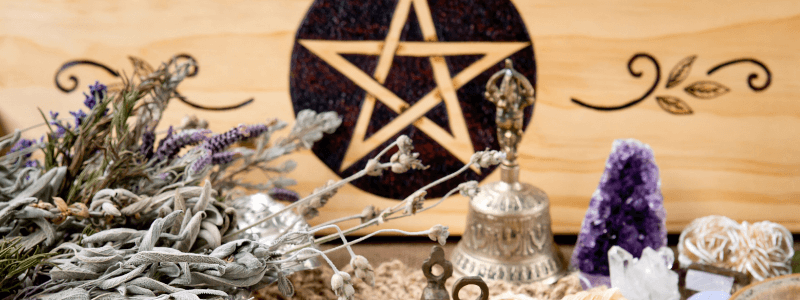
Creating a display on your home altar is one way to incorporate symbols into your magick. You’ll find that many witches prominently feature the pentagram, the triple moon, or the Horned God symbol in their personal magickal space.
If you don’t want things to look too cluttered visually (and believe me, I’m right there with you), I suggest taking one of these three and making it the centerpiece for your altar. Take some time to think about these symbols and which one means the most to you.
Candle Magick
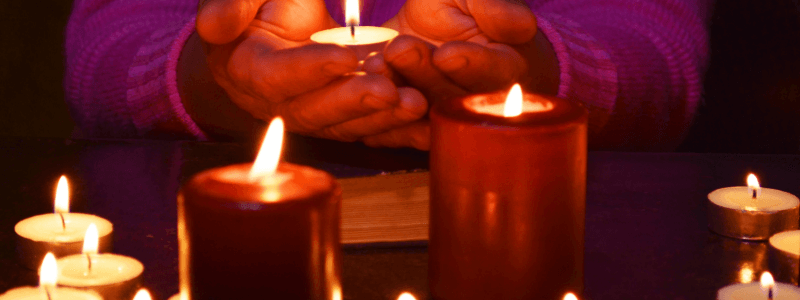
Candle magick is a popular form of witchcraft that involves harnessing the spiritual power of fire. Choosing the right color and type for your candles is key to achieving the results you want to see.
However, symbols can also play a role in this process through the act of carving them into your candles.
For example, if you were working of a spell of protection or banishment, you might choose to etch a witch’s knot into your candle of choice. More generally, carving a pentagram on a candle can increase its spiritual potency as well.
[If you’d like to see this process in action, be sure to check out our article on binding spells. The ritual included requires the carving of a solar cross onto a black candle.]
Jewelry and Other Accessories

Some witches object to the use of Wiccan symbols in jewelry and other accessories (posters, shirts, etc.). However, I think that, when used tastefully, they can create a positive reminder about the presence of magick in our everyday lives.
Explore More Wiccan Symbols
Although we’ve looked at some of the most important symbols in Wicca, there’s still lots to be discovered about the power of sacred signs within the craft.
You’ll find that the more you study them, the deeper they go—the more their mystery unfolds.
If you just can’t seem to get enough symbolism, there are lots of great resources online that cover a much wider breadth of imagery than I’ve included.
But I also recommend not spreading yourself too thin. Take some time to really focus on one or two symbols that you’re drawn to and see where they lead you. You’ll find that the signs themselves have much more to tell you than any one human possibly could.
Wiccan Symbols and Ritual Magick
In the world of ritual magick, symbols reign supreme.
This type of witchcraft is highly focused on creating magick that is highly designed, highly visual, and highly representational. So it’s safe to say that symbolism fits right in this world!
If you’d like to know more about this fascinating branch of witchcraft, I highly recommend my book The Ritual Magick Manual: High Magick, Ceremonial Magick, and Pagan Rituals. In it, I cover all the basics you need to get started in the world of highly ritualized magick.
Click the Link to Purchase it Today!
The book is full of original spells that will help you come to appreciate the power and beauty of a carefully orchestrated magickal ritual. It also comes with a tool list and plenty of background information, so that your practice is grounded in knowledge.
To see other books about Wicca and witchcraft, click the button below to see my entire library of titles:
Sign Up for the Explore Wicca Mailing List
If you like what you read, I would encourage you to sign up for the Explore Wicca mailing list. You’ll receive an email update every time we release a new article or have something exciting in the works so you never miss out!
Additionally, when you sign up you’ll also receive my free color magick correspondence chart. It’s your go-to cheat sheet for which colors work best with what spells. Sign up and download it today!
Click the button below to sign up today:
Blessed Be
No matter where you may go from here on your spiritual journey, I’m grateful that we had this time to explore the world of Wiccan symbols. It’s my sincere hope that you’ve been enlightened by what you read.
Until next time!


